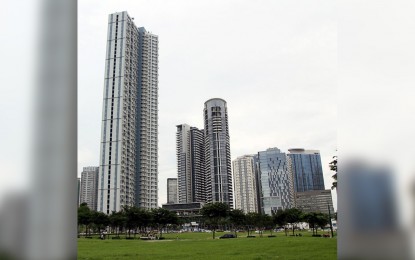
(File photo)
MANILA – The Philippine economy shrank a record 9.5 percent in 2020 but is expected to stage a strong recovery before the end of the year with the rollout of vaccines against coronavirus disease 2019 (Covid-19).
The Philippine Statistics Authority (PSA) on Thursday reported the gross domestic product (GDP) posted a smaller contraction of 8.3 percent in the fourth quarter of last year.
“The prospects for 2021 are encouraging. With the continuous calibrated reopening of businesses and mass transportation, and the relaxation of age group restrictions, we will see more economic activity in the months ahead,” said acting Socioeconomic Planning Secretary Karl Kendrick Chua, reading a prepared joint statement of the government’s economic managers in a virtual press conference.
Chua said the Duterte administration’s efforts to increasingly open the economy while fast-tracking the vaccination program and keeping the Covid-19 caseload to the lowest level possible would boost business and consumer confidence that are crucial to a robust economic recovery.
“All of these efforts to contain the coronavirus and revive the economy will allow us to prevent long-term economic scarring and productivity losses and recover to the pre-pandemic level by mid-2022,” he added.
Chua said the country had targeted in 2022 the achievement of two important economic milestones -- achieving an upper middle-income country status and lifting some 6 million Filipinos out of poverty.
“All of these relative to our own performance and the targets we have set are actually on track. And if we work together to address the remaining issues around both Covid and non-Covid issues, then we will be able to achieve the 6.5-7.5 percent growth target this year and the 8-10 percent growth target next year, and those two (targets) will put us right where we want to be based on our PDP (Philippine Development Plan) targets,” he told reporters.
Chua, chief of the National Economic and Development Authority (NEDA), said there is a need to balance to gradually open the economy, avoid prolonged quarantine, focus on localized quarantines, and implement the minimum health standards.
“(These) actually can give us a better deal wherein we address both Covid while also addressing non-Covid problems of the people. So going forward, we cannot afford anymore prolonged quarantines or risk aversion...,” he added.
The full-year GDP contraction to -9.5 percent is at the low end of the Development Budget Coordination Committee (DBCC) estimate of -8.5 to -9.5 percent for 2020.
Alongside the prospects for a mass vaccination program, Chua said the higher government spending through the Bayanihan to Recover as One (Bayanihan 2) and the 2020 and 2021 budgets, as well as the swift congressional approval of key legislative bills, would underpin economic recovery this year and onwards.
He said the 2021 budget amounting to about PHP4.5 trillion includes an allocation of PHP1.1 trillion for infrastructure.
“With a multiplier of 2.27, meaning every peso spent creates another 1.27 pesos, some 1.7 million jobs can be created to accelerate the recovery. Timely implementation of infrastructure projects will have the biggest impact on our recovery prospects,” he added.
The NEDA chief cited preliminary data from the Department of Budget and Management (DBM) showing the actual infrastructure spending was higher than programmed levels in the fourth quarter and full-year 2020.
“We have exceeded the program both for the fourth quarter and the full year on infrastructure disbursement. The reason why it is negative in the GDP account is we are comparing to the fourth quarter of 2019 where we have the highest ever infrastructure spending as a result of the catch-up plan in 2019,” he said.
Meanwhile, Chua attributed the improved performance of the economy in the fourth quarter to the further reopening of businesses and wider accessibility of public transport since October 2020.
On the demand side, private consumption, which comprises some 70 percent of GDP, remained weak with a -7.2 percent growth, he said.
He added government consumption grew by 4.4 percent despite the high base in 2019. As of Dec. 31, 2020, PHP109 billion have been released under Bayanihan 2.
On the supply side, Chua added that reopening of the economy led to smaller contractions in industry, manufacturing, and services growth.
However, agriculture performance deteriorated and contracted by 2.5 percent due to a series of typhoons, flooding, and the African swine fever, he added. (PNA)
